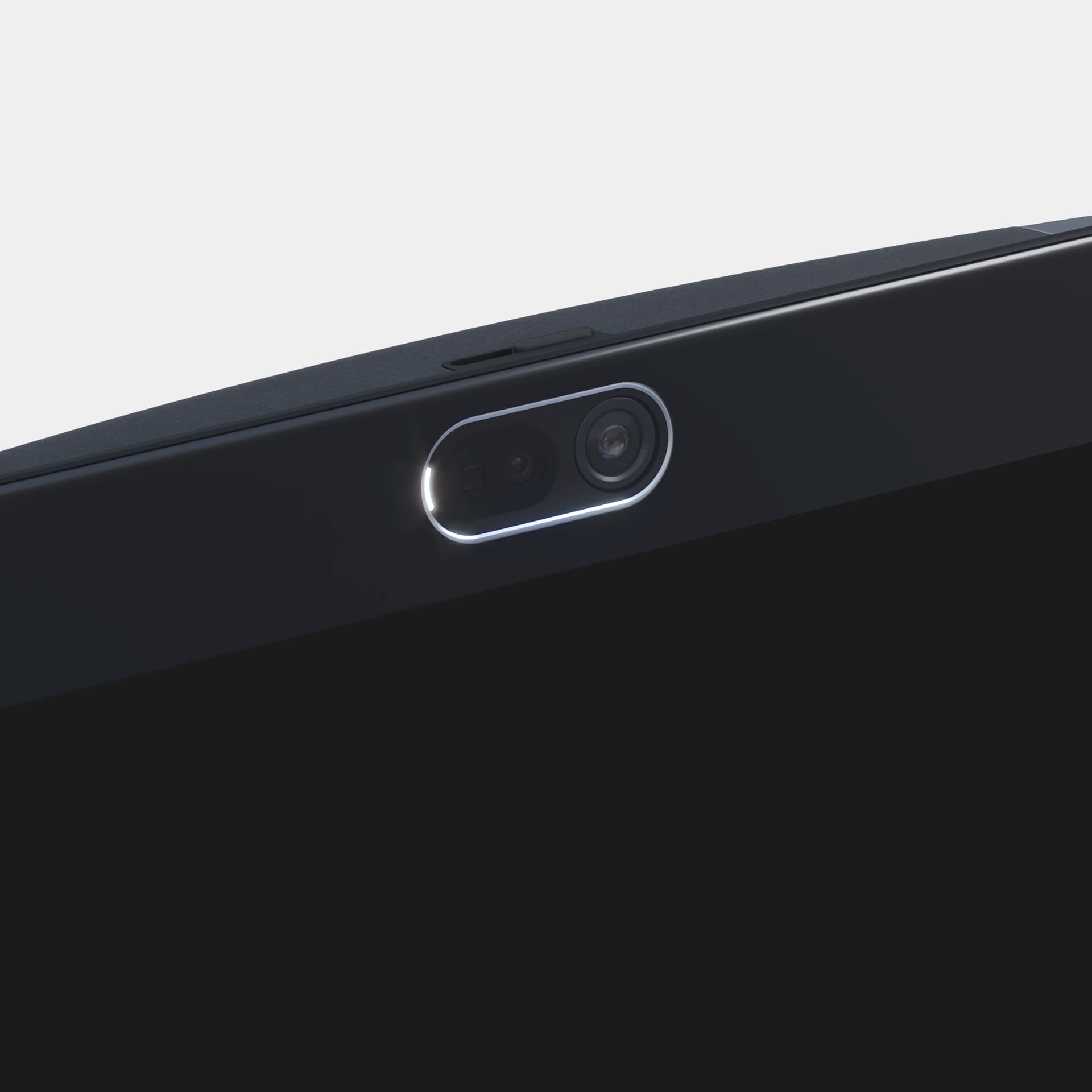



































£1,380.64*
£8.99


Product information
Neat Frame isthe first portrait-format all-in-one video device for Microsoft Teams, which can beusable anywhere. It has been specifically designed to meet the many newWork styles and spaces that businesses and employees are now embracingnow embrace.
It is asuper handy touchscreen device that can be used not only as a personalProductivity device for working from home or any office, but also for hot deskingoffice, but also for hot desking, jump rooms,Retail environments or as a virtual receptionist and all sorts ofother new and exciting applications.
Place-saving
Neat Frame is incredibly easy to set up and useincredibly easy to set up and use, offers superior audio-visualaudiovisual quality and frees up your laptop or desktop computer for work, making meetingsFreeing up your laptop or desktop computer for work, making meetings feel less like jugglingConversations, listening and sliding windows of different content back and forthContent. In other words, it declutters your PC layout as well as yourDesk or similar work surfaces. What's more, Neat Frame hasfeatures of large enterprise solutions, yet takes up relatively little spaceSpace. What's more, thanks to a discreetly integrated handle at the back, you can easily move Neat Frame from room to roomhandle on the back, you can easily move Neat Frame from room to room, depending on your individual needs or preferencesindividual needs or preferences.
Hot desk and make it your ownmake it your own.
When you arrive at the officearrive, you no longer need to worry about where you can sitor whether you have the right equipment with you. With a special device forTeams calls and meetings, you can sit down, log in to yourpersonalised teams experience and quickly join meetings,which saves time and takes away the worry of where you'll be sitting during your time in the officesit. With Microsoft Hot Desking, you can make every workstation youryour own - a great way to stay connected and productive while alsoproductive while having the flexibility to work from anywherefrom anywhere.
A powerhousefor productivity.
A specialpersonal video device with quick and easy access to the core features ofMicrosoft Teams core features makes you a productivity wonder.Enjoy always-on features like calendar, contacts, meetings andTeams Chat that make Microsoft Teams collaboration better than ever.View your OneDrive files seamlessly, then open them instantly on yourYour desktop to edit them quickly. Even better, share yourideas with others, thanks to Microsoft Whiteboard on the Neat Frame's interactive touchscreenNeat Frame's interactive touchscreen.
Look good, feel good and show offlook, feel and show your best side.
With itsperfectly placed, high-resolution wide-angle camera, the Neat Frame allows for directallows direct communication at eye level for a more natural and realistic interactionmore realistic interaction. In addition, the bright digital display offersimages in a variety of environments, so you can be sure that the device isyou and others in beautiful and detailed images every timeImages. So Neat Frame offers you the opportunity to alwayslook good, feel good and look your best,no matter how or where you want to meet or interact.At the same time, it offers you an optimised layout of people and contentwith touch controls that bring both to the fore by filling more screen space and overflowing
More audio, fewer distractions.
Neat Framefeatures advanced audio processing that enhances human voice pickup andVoice pickup and eliminates distracting noises. These includestatic noises such as a fan or a hoover or otherdynamic sounds such as typing on a keyboard or a crackling chip bagChip bag. It also eliminates garbled "double talk", wheretwo people talking at the same time, so your conversations can be more naturalmore natural.
Technical data
| Name | Neat Frame All-in-One video device for Zoom and Microsoft Teams Video conferencing system, 1920 x 1080 Full HD |
|---|---|
| Article number | 1000026026 |
| GTIN/EAN | 8592978377663 |
| Manufacturer SKU | NEATFRAME-SE |
| Model name | Frame All-in-One video device for Zoom and Microsoft Teams |
| Brand | Neat |
| Product Type | Video conferencing system |
| Technology | LED |
| Resolution | 1920 x 1080 Full HD |
| Diagonal | 15.6" |
| Aspect Ratio | 16:9 |
| Max. Brightness | 450 cd/m² |
| Inputs | 1x 3,5mm Jack , 1x USB-C |
| Product width | 22.25 cm |
| Product height | 44.5 cm |
| Product depth | 11.12 cm |
| Weight | 3.45 kg |
| Colour | Black |
| EEK Spectrum | A to G |
| Condition | New |
| Warranty | 12 Month |
| Warranty type | Bringin service Service and support information |
Product safety
| Person responsible for the EU |
|---|
| Legrand Care GmbH |
| Robert-Bürkle-Straße 3 |
| 85737 Ismaning |
| Germany |
| infogermany.legrandcare@legrand.com |



